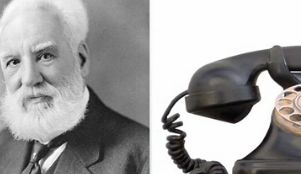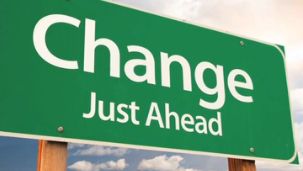Creativity, Innovation, and Change and the Knowledge Economy
After you watch the video and know the material, click HERE for the quiz.
In business, one has to be creative and innovative in order to stay ahead of the competition. Having said that, one also needs to be able to manage change, as the business world changes on a constant basis. This lesson will address each of these topics and explain how they interrelate to business.
What Michelangelo and Bell Can Teach Us
It is easy to see how one might not think that Michelangelo was a smart guy - creative, yes, but smart? Well, that's open to discussion. After all, he was a brilliant painter, but that is really all he's known for. Back in the day (let's be honest), being smart was equated with knowing which leech to pick for bloodletting and making sure your neighbor was not a witch. Therefore, we had a lot of creativity from old Michelangelo, but not a lot of innovation.
 |
When we look at innovation, we think of people like Alexander Graham Bell, who invented the telephone. Pretty smart guy if I say so myself. However, it can be argued he was also creative - as he designed a product to fill a need that people at that time didn't really know they needed. The Pony Express was fine, and talking was reserved for church meetings and social gatherings. Alexander not only was creative and innovative, but he also pushed for change to help move the world forward. When looking at business from this perspective, it's important that a manager has the ability to harness these three areas and work with them to be a market leader.
 |
Creativity, Innovation and Driving Change
The reason we use Michelangelo and Bell as examples is that it's important to distinguish between being creative, innovative and yet still a driver of change. These three areas are the cylinders in the engine of modern business. Without them, business would stay stagnant and not really move forward. Oh sure, we would have some inventions or new products, but all those inventions and new products are driven by someone first being creative, then being innovative and finally wanting to drive or create change.
You see, Michelangelo was creative but not innovative in a business sense, and he did not drive change. He was content with his creativity, and to his defense, that is all he was supposed to do (as he was a painter), but Bell took that creative thought process a step further.
 |
So why all this talk about creativity, innovation and change? You see, in the modern business world, it is not enough to be creative. Thinking of new ways of doing things or developing a new product is great, but that creativity has to be married (if you will) to innovation. There used to be an old saying that you 'build a better mousetrap and the world will beat a path to your door.' That is still somewhat true, but now that better mousetrap has to be innovative and drive change, or it simply will not get accepted by people in the market.
The Knowledge Economy
The knowledge economy can be defined as a formal structure of consumption and production that is based on the level of intellectual capital that is obtainable. Okay, how about some English this time? The knowledge economy is an economic system where growth is directly related to the amount, quality and accessibility of the information. Thus, growth and development of an economy is based on the information people can extract about it.
 |
Now we can see why we made the distinction between Michelangelo and Bell. Bell extracted information and created an innovative product that drove change in the market. He blended creative thought with information, as well as innovation, engineering and design, to develop a product that people did not even know they needed - but once they saw it, they knew they had to have it. Simply put, it is not enough in today's world to be creative - you also must be innovative and be able to drive change.
So What's the Big Deal?
By now you might be thinking, 'What's the big deal? Creativity, innovation and change are great words to use, but I'm not going to develop anything in my job. I am working to build a department, and that innovative and creative stuff is left up to the other guys who are running the business!' Unless, of course, it is you running the business - then you do have to be creative, be innovative and drive change.
Ah, but not so fast.
You see, when we talk about these areas, it's important to understand that everyone needs to be change-savvy - that is, to understand and grasp change as it happens and realize what it can mean to their company, position and life. A person does not have to develop product or be creative in order to work within a knowledge economy, but understanding creativity and innovation and then using them to help drive change is important.
 |
Take a minute to think about all the products that have been developed in your lifetime (or for any lifetime) that were creative, innovative and drove change:
- The Internet
- Mobile phones
- Skype or videoconferencing
- The microwave oven
- Netflix
The list goes on and on. But let us take this a step further. Where would you be as a manager if you did not embrace, understand and work with these advancements? That's right; you'd be on the outside looking in as others moved forward and used these innovative and creative products to advance their position, departments and companies. Thus, the importance of being knowledge-savvy and to some degree a change agent (a person who acts as a catalyst for change) is critical for today's managers.
How Do You Do It?
In general, people resist change. They like what they know and typically are not welcoming to issues or ideas that they do not know. However, there are some things we can do to help us deal with change more easily:
- Simply notice that you are in the midst of change and that change is a part of you.
- Face your feelings about the change, especially when the change is imposed and beyond your control.
- Figure out when to accept and when to reject the change.
- Adopt an attitude of anticipation and be grateful. Welcome change as an opportunity.
- Choose your thoughts and attitudes about each change. Negative thoughts block your creativity and problem-solving abilities. Positive thoughts build bridges to possibilities and opportunities.
- Learn to relax.
- Set smart goals so you can consciously guide the change.
I'm not saying following these rules will help you become a change agent, but at least having some guiding principles will help you get over the rough patches.
 |
Lesson Summary
There is no easy way to become change-savvy in a knowledge economy. It is easy to see that today's business environment does rely on the quality, quantity and accessibility of information. It is fast-paced, and the person who has more knowledge will usually be the one who ends up on top. People are either seeking information out or developing life-changing products from it (as Bell did), or they are working with the results of that innovation and change in their daily lives. This means there are individuals that drive change, accept and support change (change agents) or run from change. One thing is for certain - as we move towards a more technologically driven world, if you run from creativity, innovation and change, you will run yourself right out of a job.